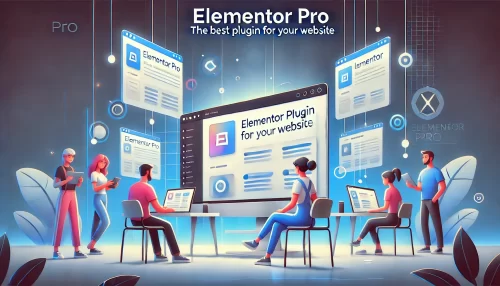Table of Contents
Are you wondering how to start marketing business online with zero experience? Launching an online marketing business might seem intimidating, but it’s entirely achievable, even for beginners.
This article breaks down the step-by-step process to help you build a thriving online business from scratch.
Understanding Marketing Business Basics
Starting a marketing business online may feel overwhelming at first, but understanding the basics lays the foundation for your success. In this section, we’ll explore what a marketing business is, its benefits, and common misconceptions about starting with zero experience.
What Is a Marketing Business and How Does It Work?
A marketing business helps companies connect with their audience by promoting products or services through various strategies. From social media campaigns to email marketing, the goal is to attract customers and drive sales.
A marketing business typically offers services like content creation, advertising, and strategy development tailored to specific industries. For example, a company selling eco-friendly products might focus on Instagram and Pinterest campaigns targeting environmentally-conscious consumers.
As an entrepreneur, your role is to understand client goals and design marketing plans that resonate with their audience. This could involve running PPC ads, managing email sequences, or building SEO-friendly content. Each task is about delivering measurable results.
Even without experience, learning the essentials like customer behavior, marketing channels, and branding can get you started. Free courses and certifications, like those offered by Google or HubSpot, can provide a solid foundation in digital marketing.
The beauty of this business is scalability. You can start solo with minimal resources, then expand your team or service offerings as you grow confident in your skills and understanding.
Key Benefits of Starting an Online Marketing Business
Launching an online marketing business comes with unmatched flexibility and potential. Let’s explore the advantages that make it a rewarding venture.
Firstly, the startup costs are low. You don’t need a physical office or expensive tools to get started. A laptop, internet connection, and free marketing tools like Canva and Buffer are enough to begin.
Secondly, the demand for digital marketing is skyrocketing. With businesses of all sizes transitioning online, your services are more valuable than ever. Companies are eager to invest in marketing experts who can help them stand out.
Thirdly, an online marketing business offers time and location freedom. You can work from anywhere and set your schedule, allowing for better work-life balance. This is ideal if you’re managing family responsibilities or seeking flexibility.
Lastly, it’s a lucrative industry with high earning potential. As your expertise grows, you can charge premium rates for services like SEO optimization, social media management, and email marketing campaigns.
These benefits make online marketing an appealing and practical choice for aspiring entrepreneurs.
Debunking Myths About Zero Experience in Marketing
It’s easy to feel intimidated if you’re new to marketing, but many fears are based on myths rather than reality. Let’s address the most common misconceptions.
Some people believe you need years of experience to succeed. In reality, starting small and learning as you go is perfectly acceptable. Many successful marketers began with free resources, trial-and-error, and determination.
Another myth is that you must invest in expensive tools right away. The truth is, free tools like Mailchimp for email marketing and Canva for graphic design can cover your initial needs. Start simple, then upgrade as your business grows.
People often think clients won’t trust someone with no track record. But that’s not true if you’re honest and provide value. Offering free or discounted services initially can help build a portfolio and gain testimonials.
Finally, some assume online marketing is too competitive to enter. While competition exists, there’s plenty of room for specialists in specific niches, like fitness coaching or local business marketing. Choosing a niche helps you stand out.
The key is to focus on progress, not perfection. With consistent effort, even beginners can build credibility and succeed in the marketing world.
Researching Your Niche Market for Success

Understanding your niche is a game-changer when learning how to start a marketing business online. A clearly defined niche allows you to focus your efforts, connect with the right audience, and stand out in a competitive landscape.
Why Choosing the Right Niche Is Crucial
Selecting the right niche is the backbone of a successful online marketing business. Without a clear focus, your efforts can feel scattered, making it harder to gain traction.
Choosing a niche lets you narrow your target audience and tailor your services to meet specific needs. For instance, focusing on digital marketing for fitness coaches allows you to create targeted campaigns that resonate with that group. When you specialize, your expertise shines, which builds trust with potential clients.
A niche also makes your marketing more effective. It’s easier to craft messages that speak directly to your audience’s pain points and goals. For example, a niche in eco-friendly products might involve promoting sustainable packaging or green initiatives, attracting customers who value the same.
I believe niches are the secret to managing competition. Instead of appealing to everyone, you’ll attract loyal clients who align with your specific offerings. This loyalty translates into repeat business and referrals, helping your business grow sustainably.
Starting with a niche doesn’t limit you; it gives you a starting point. As your skills develop, you can expand into new areas or even redefine your niche based on client feedback and demand.
Steps to Identify a Profitable Online Marketing Niche
Finding a profitable niche involves research, introspection, and understanding market demand. Let’s break it into actionable steps.
First, think about your interests and strengths. Are you passionate about a particular industry or skilled in certain marketing techniques? For instance, if you love design, offering services like social media branding or website creation might feel natural. A niche aligned with your interests ensures you enjoy your work while staying motivated.
Second, research market demand. Look into industries or services experiencing growth. Platforms like Google Trends or industry reports can reveal where the opportunities lie. For example, digital marketing for small e-commerce stores is in high demand due to the booming online shopping trend.
Third, analyze competition. A profitable niche will have competitors, but the key is finding gaps they’re not addressing. For example, if competitors target big brands, positioning yourself as an affordable solution for startups could set you apart.
I suggest testing your niche idea with a pilot project. Offer a free or discounted service to gauge interest and refine your approach. Feedback from this stage is invaluable, helping you identify what works and what needs improvement.
Once you’ve chosen your niche, create a clear mission statement. This helps you stay focused and provides a foundation for your marketing efforts, making it easier to connect with your audience.
Tools for Conducting Niche Research Effectively
Effective niche research relies on tools that provide data-driven insights. These tools simplify the process, ensuring you make informed decisions.
Google Trends is a fantastic starting point. It helps you track search interest for specific keywords over time. For instance, if you’re considering “digital marketing for pet businesses,” you can see whether demand is growing or seasonal.
Keyword research tools like Ubersuggest or SEMrush are essential for identifying what potential clients are searching for. Enter a term like “social media marketing,” and these tools reveal related keywords, search volumes, and competition levels. This data helps you refine your niche to focus on profitable areas.
Social media platforms are underrated for niche research. Join groups or forums related to your potential niche. For example, Facebook groups for entrepreneurs often discuss their struggles with digital marketing, offering insights into services they need.
Customer review platforms like Yelp or Trustpilot can also provide inspiration. Read reviews to understand what customers appreciate or dislike about existing services in your chosen niche. This helps you position your business to fill gaps in the market.
I recommend keeping a notebook or document to track your findings. As you gather data, patterns will emerge, guiding you to the best niche opportunities for your online marketing business.
Building a Strong Online Presence
A strong online presence is essential when learning how to start a marketing business online. Your website, content, and user experience reflect your brand and attract potential clients, making this step a cornerstone of your success.
Setting Up a Professional Website for Your Business
Your website is the first impression potential clients will have of your marketing business. A clean, professional, and user-friendly design builds trust and encourages engagement.
Start with a reliable website builder like WordPress or Wix, which offer customizable templates. Choose a design that aligns with your niche and is mobile-responsive. For example, if your target audience is creative professionals, a visually appealing design with bold imagery can resonate better.
I recommend focusing on essential pages first: Home, About, Services, and Contact. Clearly state what you offer and include a simple call-to-action (CTA) on each page. For instance, a “Book a Free Consultation” button makes it easy for visitors to take the next step.
Professional branding is also key. Use a consistent color scheme, logo, and typography that reflect your brand’s personality. This creates a cohesive and memorable identity that potential clients will associate with professionalism.
Lastly, ensure your website loads quickly. Slow load times drive visitors away. Tools like Google PageSpeed Insights can help identify areas for improvement. A fast-loading website not only keeps visitors engaged but also improves search engine rankings.
Crafting a Compelling About Page to Gain Trust
Your About page is where you connect with visitors personally, showcasing your story, values, and expertise. It’s an opportunity to build trust and demonstrate why clients should choose your services.
Start with an engaging introduction. Share your journey, even if you’re new to marketing. For example, explain what inspired you to learn how to start a marketing business online. Highlight your passion and commitment to helping clients succeed.
Next, emphasize your unique value. If you focus on startups or small businesses, mention how your tailored approach makes a difference. Share how your services solve common challenges, like building brand visibility or driving website traffic.
Use testimonials or social proof if available. If you don’t have client testimonials yet, mention certifications, courses, or other achievements that validate your skills. For instance, completing a Google Ads certification can reassure potential clients of your expertise.
I suggest adding a personal touch. Share a relatable detail, like your favorite productivity hack or what excites you about marketing. This humanizes your brand and makes you more approachable to clients.
Optimizing Your Website for SEO and User Experience
An optimized website helps potential clients find you and creates a positive browsing experience, which is crucial for building credibility and driving conversions.
Start with keyword research to align your content with what your audience is searching for. Use tools like SEMrush or Ubersuggest to find terms related to how to start a marketing business online. Integrate these keywords naturally into your headlines, content, and meta descriptions.
Create high-quality content that answers common questions or solves specific problems in your niche. For example, a blog post titled “5 Marketing Strategies for Small Business Owners” can drive traffic and position you as an expert.
Make navigation simple and intuitive. Use a clear menu structure so visitors can find information quickly. For example, your services page should be accessible in just one or two clicks from the homepage.
I recommend optimizing images for faster loading. Compress files using tools like EWWW.io and add descriptive alt text, incorporating keywords where relevant. This improves SEO and ensures a better user experience for everyone.
Lastly, set up Monsterinsights to monitor traffic and visitor behavior. This data provides insights into what’s working and where you can improve, helping your website evolve with your business.
Developing Essential Marketing Skills

Developing essential marketing skills is a vital step when figuring out how to start a marketing business online. With the right skills, you can deliver impactful results for your clients, build trust, and stand out in a competitive market.
Must-Have Skills for Online Marketing Success
Success in online marketing demands a mix of technical and creative abilities. These skills empower you to design effective strategies, engage audiences, and drive measurable results.
I believe understanding search engine optimization (SEO) is non-negotiable. Mastering SEO enables you to create content that ranks well on search engines, increasing visibility for your business and clients. For instance, using keyword research tools like SEMrush can guide your content planning.
Content creation and storytelling are equally important. Whether it’s blog posts, videos, or social media updates, crafting engaging and relatable messages can make a huge impact. The ability to tell compelling stories that align with your client’s brand helps foster stronger connections with their audience.
Data analysis skills are crucial too. Platforms like Google Analytics provide insights into user behavior, campaign performance, and ROI. Knowing how to interpret this data allows you to refine your strategies and improve outcomes for your clients.
Lastly, communication and project management are must-haves. Coordinating campaigns, managing deadlines, and clearly presenting ideas to clients require strong organizational and interpersonal skills. Building these abilities ensures smooth collaboration and trust.
Free Resources to Learn Digital Marketing Skills
Learning digital marketing doesn’t have to break the bank. Numerous free resources are available to help you build expertise and confidence in your skills.
Online platforms like Google Digital Garage and HubSpot Academy offer comprehensive courses on topics such as SEO, social media marketing, and email campaigns. These resources are beginner-friendly and come with certifications to showcase your knowledge.
YouTube is another valuable learning tool. Many industry professionals share tutorials, case studies, and tips on their channels. For example, Neil Patel and Ahrefs offer free videos on content marketing and keyword research that are packed with actionable advice.
I suggest joining free webinars or virtual workshops. Websites like Coursera or Eventbrite often host sessions on marketing trends and techniques. These live sessions also provide opportunities to ask questions and engage with experts.
Don’t overlook marketing blogs and newsletters. Subscribing to blogs like Moz, Content Marketing Institute, or MarketingProfs can keep you informed about the latest strategies and tools. This approach combines ongoing education with staying updated on trends.
How to Stay Updated on Industry Trends
The marketing industry evolves rapidly, so staying updated is essential to remain competitive. Adapting to trends ensures your strategies stay relevant and effective.
Following reputable industry blogs is a great start. Websites like Social Media Examiner or Search Engine Journal regularly publish insights on the latest tools, platform updates, and strategies. These blogs are excellent for keeping your knowledge fresh.
I recommend joining online communities, such as LinkedIn groups or Reddit forums dedicated to digital marketing. Engaging in discussions with peers helps you learn from their experiences and spot emerging trends early.
Attending virtual events and conferences is another effective way to stay ahead. Many organizations host free or low-cost marketing summits that feature expert speakers. These events provide unique perspectives and practical advice you can apply immediately.
Experimentation is also key. Testing new strategies or tools allows you to experience trends firsthand. For example, if video marketing is gaining traction, experimenting with short-form videos can help you learn how to incorporate this trend into client campaigns effectively.
Creating a Marketing Plan Without Experience
A marketing plan is your roadmap when figuring out how to start a marketing business online. It helps you stay organized, set clear goals, and measure progress, even if you’re just starting with no prior experience.
Why Every Business Needs a Marketing Plan
Every successful business relies on a marketing plan to guide its efforts and achieve desired results. A well-structured plan not only keeps you focused but also ensures your strategies align with your business goals.
A marketing plan acts as a blueprint, helping you define your target audience and understand their needs. For instance, if your niche is small businesses, you’ll want to create campaigns that resonate with their limited resources and desire for growth.
I believe having a plan prevents wasted time and effort. Without a clear direction, you might invest in strategies that don’t align with your objectives, like targeting the wrong audience or using ineffective platforms. With a plan, you can prioritize what truly matters.
It also sets measurable goals, which are crucial for tracking success. Whether it’s gaining a specific number of leads or increasing website traffic, having defined objectives gives you a sense of achievement and shows your progress.
Lastly, a marketing plan builds confidence. When you know what you’re doing and why, it’s easier to communicate your ideas to clients or stakeholders, making them trust you as an expert.
Steps to Draft an Effective Marketing Strategy
Creating an effective marketing strategy may seem overwhelming, but breaking it into smaller steps makes the process manageable.
Start with defining your target audience. Who are they? What problems are they trying to solve? For example, if your audience is online coaches, they likely need help creating content or boosting social media engagement. Use this knowledge to shape your messaging.
Next, set SMART goals: Specific, Measurable, Achievable, Relevant, and Time-bound. Instead of saying, “I want more clients,” set a goal like, “I want to gain five new clients within three months through social media campaigns.”
After setting goals, decide which marketing channels to use. I recommend starting with platforms where your audience spends the most time. If your target clients are e-commerce businesses, focus on Facebook ads or email campaigns to drive traffic.
Lastly, create a content calendar. Plan what content you’ll post, when, and where. For instance, you might write a blog post on “Top 5 Digital Marketing Tips” one week, then promote it on LinkedIn and Twitter. This keeps your efforts consistent and organized.
Affordable Tools to Organize Your Marketing Plan
Managing your marketing plan effectively requires the right tools, especially when starting with a limited budget. Thankfully, there are many affordable or free options to help you stay organized.
Trello and Asana are excellent project management tools. I suggest using these platforms to create a visual representation of your tasks. For example, you can set up boards for content creation, client campaigns, and analytics, ensuring everything is tracked in one place.
For social media management, tools like Buffer or Hootsuite simplify scheduling and monitoring posts. If your strategy involves consistent social media engagement, these tools save time and help maintain a steady online presence.
Canva is a must-have for designing visuals. Whether you need to create infographics, social media posts, or client presentations, Canva’s free version offers plenty of templates to get started. It’s user-friendly and perfect for beginners.
I also recommend Google Analytics for tracking website performance. This free tool provides insights into traffic, user behavior, and conversion rates, helping you refine your marketing strategies over time.
These tools make creating and managing a marketing plan easier, enabling you to focus on growing your business and delivering value to your clients.
Leveraging Social Media for Growth

Social media is a powerful tool when figuring out how to start a marketing business online. It allows you to connect directly with your audience, promote your services, and grow your brand efficiently and cost-effectively.
Choosing the Best Platforms for Your Target Audience
The right social media platforms can make or break your marketing efforts. Picking platforms where your target audience spends their time ensures your content reaches the right people.
Start by researching your audience demographics. For example, if your niche is working with young entrepreneurs, platforms like Instagram and TikTok may be the best fit. For B2B clients, LinkedIn is often the ideal choice because it’s geared toward professionals and business networking.
I suggest analyzing the type of content you plan to create. If visuals like photos or videos are central to your strategy, platforms like Instagram, Pinterest, or YouTube work well. For text-heavy content, Twitter or LinkedIn might be more effective.
Consider the goals of your marketing business. If you aim to drive traffic to your website, Facebook and Instagram’s ad features can generate clicks. If you want to build a professional network, LinkedIn is unmatched for fostering meaningful connections.
Test multiple platforms before committing. Share content on two or three platforms initially and track engagement. This trial-and-error approach reveals which platforms perform best for your business and audience.
Tips to Create Engaging Social Media Content
Engaging content is the lifeblood of any successful social media strategy. It helps you build a following, establish credibility, and encourage client interaction.
Focus on storytelling. People connect more with stories than sales pitches. Share posts about your journey of learning how to start a marketing business online, or client success stories that highlight the value you bring. Authenticity builds trust.
Use visuals to grab attention. Eye-catching images, videos, and infographics are more likely to stop a user from scrolling. Canva is a fantastic tool to create professional-looking graphics, even if you’re a beginner.
Engage with your audience regularly. Respond to comments, ask questions in your posts, and create polls to encourage interaction. For example, a poll asking, “What’s your biggest challenge in digital marketing?” can spark conversation and provide valuable insights.
Consistency is key. Posting sporadically won’t keep your audience engaged. Create a content calendar to plan and schedule posts, ensuring your followers see fresh content regularly without overwhelming them.
How to Use Analytics to Refine Social Media Strategy
Social media analytics provide insights into what’s working and what needs improvement. Understanding and using this data is crucial for refining your strategy and achieving growth.
Start with the analytics tools built into platforms like Facebook, Instagram, or LinkedIn. These tools show metrics like engagement rate, reach, and click-through rates. For example, if a specific post gets more shares, you’ll know that type of content resonates with your audience.
I recommend tracking trends over time rather than focusing on one-off successes. For instance, consistent growth in followers or website clicks is a better indicator of progress than a single viral post. Use these patterns to guide future content.
Experiment with different content formats and track performance. If you notice that reels perform better than static images on Instagram, lean into that format. Let the data shape your approach rather than relying solely on guesswork.
Schedule regular reviews of your analytics. I suggest checking weekly or monthly to spot trends and adjust your strategy as needed. This habit ensures your social media efforts remain aligned with your goals and your audience’s preferences.
Understanding and Using Paid Advertising
Paid advertising can accelerate growth when learning how to start a marketing business online. It provides targeted exposure, helping you attract the right audience quickly and effectively.
Introduction to Paid Advertising for Beginners
Paid advertising involves promoting products or services through channels like Google Ads, social media platforms, and sponsored content. It’s an essential tool for reaching specific audiences and achieving measurable results.
I recommend starting with platforms that align with your target audience. For example, Google Ads is great for reaching users actively searching for services, while Instagram Ads work well for engaging younger, visual-centric audiences.
You’ll want to familiarize yourself with ad types. Search ads appear in search engine results, display ads show on websites, and social media ads target users based on demographics. Understanding these options helps you choose the best fit for your goals.
Budgeting is key. Begin with small campaigns to test what works. For instance, allocate $50 to a Facebook ad targeting a specific audience, then analyze performance before scaling up. This approach minimizes risk while maximizing learning.
I suggest tracking performance closely. Metrics like click-through rates (CTR) and conversions show whether your ads are effective. Most platforms provide built-in analytics to help refine your strategy and improve results.
Creating Cost-Effective Campaigns With Limited Budget
Starting paid campaigns doesn’t require a large budget. With the right strategies, you can create impactful campaigns while keeping costs manageable.
Focus on targeting. Define your audience narrowly to ensure your ads reach the right people. For instance, instead of targeting “business owners,” you could target “small business owners in e-commerce,” ensuring higher relevance and better results.
I believe testing is critical for cost efficiency. Run A/B tests on ad creatives, headlines, or audiences to see what performs best. If one version generates more clicks or conversions, you can optimize your budget toward that format.
Use retargeting to reach users who’ve already interacted with your brand. For example, someone who visited your website but didn’t make a purchase can see a retargeting ad, encouraging them to complete the action. Retargeting often leads to higher ROI.
Set clear goals. Whether it’s driving traffic or generating leads, knowing your objectives helps you choose the right campaign type and avoid wasting money on irrelevant clicks.
Common Mistakes to Avoid in Paid Advertising
While paid advertising is powerful, beginners often make mistakes that hinder success. Recognizing these pitfalls can save time, money, and frustration.
One common mistake is neglecting research. Running ads without understanding your audience or platform specifics can result in low engagement. Take time to study your audience’s preferences and behaviors.
Another issue is failing to monitor performance. Ads require ongoing attention to ensure they’re meeting goals. Set aside time to review metrics regularly and adjust campaigns if needed.
I suggest avoiding overly broad targeting. While it might seem like casting a wide net increases chances, it often dilutes your impact. Narrow targeting delivers better results and avoids wasting your budget.
Don’t ignore ad quality. Poor visuals, irrelevant headlines, or unclear calls-to-action discourage clicks. Invest time in crafting compelling ads that resonate with your audience’s needs and desires.
Networking to Build Valuable Connections

Networking plays a critical role in scaling your marketing business. Building meaningful relationships can lead to mentorship, collaborations, and valuable clients.
How Networking Can Help You Scale Your Business
Networking expands your reach and connects you with individuals who can help grow your marketing business. It’s about creating mutually beneficial relationships that open doors to new opportunities.
When you network, you’re essentially marketing yourself. Sharing your expertise with potential clients, collaborators, or industry leaders can result in referrals and partnerships. For instance, a conversation with a small business owner might lead to your first client.
I’ve found that networking also provides valuable learning opportunities. Engaging with others in the industry exposes you to new ideas, strategies, and tools that you can incorporate into your own business.
Networking builds credibility. Attending events or participating in discussions shows you’re serious about your work, helping establish trust with peers and potential clients. This credibility often translates to long-term business relationships.
Remember, networking isn’t about asking for favors. Focus on providing value to others, like sharing insights or offering advice. People are more likely to help you when they see you as genuine and helpful.
Effective Strategies for Networking Online
Online networking has become essential, providing opportunities to connect with others regardless of location. You can build a robust network by leveraging digital tools and platforms.
Start with LinkedIn, a professional platform designed for networking. I suggest optimizing your profile with a clear photo, concise bio, and details about your services. Engage with posts in your niche to start meaningful conversations.
Participate in webinars or virtual meetups. These events allow you to learn and network simultaneously. For example, introducing yourself in a chat during a digital marketing workshop might spark a connection with someone in need of your services.
Social media groups on Facebook or Reddit also offer networking opportunities. Join groups relevant to your niche and engage thoughtfully. Providing helpful answers to questions positions you as an expert, attracting potential clients.
I recommend personalizing your interactions. Instead of sending generic connection requests, write a short message explaining why you want to connect. This approach feels authentic and increases the likelihood of a positive response.
Joining Communities to Find Mentors and Clients
Communities, both online and offline, provide a space for learning, sharing, and growing your business. They’re excellent for finding mentors who guide you and clients who need your expertise.
Look for industry-specific forums. Sites like GrowthMentor or Indie Hackers are designed for professionals seeking advice and collaboration. Engaging in these spaces can connect you with experienced mentors or potential collaborators.
Local business events or coworking spaces also provide opportunities for in-person networking. These settings foster direct connections and can often lead to referrals or partnerships.
I recommend exploring professional associations. Many industries have organizations that host events, offer resources, and connect members. Joining one aligned with your niche can boost your visibility and credibility.
Stay consistent in your participation. Whether it’s attending weekly meetups or contributing to online discussions, regular involvement helps you build strong relationships and keeps you top-of-mind for opportunities.
Building a Portfolio Without Prior Experience
When starting your marketing business online, a portfolio is essential to showcase your skills and attract clients. Even without experience, you can create a compelling portfolio that demonstrates your potential and builds credibility.
The Importance of Showcasing Your Work
A portfolio isn’t just a collection of work; it’s a tool that tells your story and highlights what you can achieve for your clients.
I suggest thinking of your portfolio as your marketing pitch. Clients want to see examples that prove you understand their needs. For instance, including a mock social media campaign tailored to a specific industry shows you can deliver relevant solutions.
A strong portfolio boosts confidence. When clients see clear evidence of your skills, they’ll feel more comfortable trusting you with their marketing needs. This is especially important if they’re choosing between several service providers.
Make your portfolio accessible. Whether it’s a dedicated page on your website or a PDF you can share, ensure potential clients can view it easily. I recommend highlighting your best work upfront to grab their attention immediately.
Include a variety of projects that reflect different skills, such as SEO, content creation, or paid advertising. Even if these are hypothetical or personal projects, diversity in your portfolio showcases your versatility.
Creating Case Examples Based on Hypothetical Scenarios
If you don’t have real-world experience yet, creating case examples from hypothetical scenarios can effectively demonstrate your skills.
Think about the type of clients you want to attract and create projects that address their needs. For example, if you’re targeting small businesses, design a sample marketing plan for a local café, complete with SEO strategies and a social media calendar.
I advise treating these mock projects as seriously as real ones. Use data and research to back your strategies. For instance, include keyword analysis for SEO or a proposed budget for paid ads. These details make your examples more credible.
Present your work visually. Mock social media posts, ad designs, or email templates add a professional touch to your case studies. Tools like Canva can help you create high-quality visuals without much experience.
Remember to describe your thought process. Explain the problem you were addressing, the solutions you proposed, and the results you aimed for. This gives potential clients insight into how you approach challenges.
Using Testimonials and Referrals to Build Credibility
Testimonials and referrals can significantly enhance your credibility, even when you’re new to marketing.
Reach out to friends, family, or acquaintances who might benefit from your services. Offer to create a free or discounted project in exchange for honest feedback. For instance, designing a website for a local non-profit could earn you a glowing testimonial.
I believe building relationships with early clients leads to referrals. If someone is happy with your work, they’re likely to recommend you to others in their network. Make it easy for them to refer you by providing a simple way to share your contact information or portfolio.
Highlight testimonials in your portfolio or website. A quote like, “They helped increase our website traffic by 50% in two months!” adds significant weight to your credibility.
Ask for detailed feedback. Instead of a generic “great work,” encourage clients to share specific results or how your services solved their challenges. This provides prospective clients with tangible reasons to choose you.
Providing Value to Your Clients

Providing consistent value to your clients is the foundation of a successful marketing business. Understanding their needs, exceeding their expectations, and fostering long-term relationships will keep your clients loyal and your business thriving.
Understanding Your Clients’ Needs and Goals
Understanding your clients’ goals is the first step to delivering impactful results. Listening carefully and asking the right questions helps you craft personalized solutions.
Start every project with a discovery session. Ask about their business objectives, target audience, and challenges. For example, if a client wants to increase sales, dig deeper to understand whether the issue lies in traffic, conversions, or brand visibility.
I suggest creating a detailed client brief. Outline their goals and how you plan to address them. This document ensures you’re on the same page and sets clear expectations from the start.
Stay flexible as needs evolve. Sometimes, clients might not fully understand what they need until you begin working together. Be open to refining your approach based on new insights or feedback.
Empathy matters. Understanding their challenges on a personal level helps you connect with them and build trust. Clients value service providers who genuinely care about their success.
Delivering Results That Exceed Expectations
Exceeding client expectations builds trust and earns repeat business. It shows you’re committed to their success, not just completing a project.
Over-deliver where possible. For instance, if you’re tasked with writing three blog posts, suggest ideas for additional content or provide detailed keyword research to enhance their strategy.
Track and report results regularly. Clients appreciate transparency and knowing their investment is paying off. If you’ve helped grow their email list or increased website traffic, share those metrics clearly.
I recommend anticipating their needs. For example, if you notice their website isn’t mobile-friendly while working on their SEO, point it out and offer a solution. Being proactive shows initiative and adds value.
Always follow through on deadlines and promises. Reliability is one of the most important qualities clients look for, and keeping your word strengthens your reputation.
Building Long-Term Relationships With Clients
Long-term client relationships are key to sustaining and growing your business. These relationships lead to repeat projects, referrals, and mutual trust.
Maintain regular communication. Whether it’s weekly updates or monthly check-ins, staying in touch ensures clients feel valued and informed. Even after completing a project, reaching out occasionally helps keep the connection alive.
Offer ongoing support. If a client needs help tweaking an ad campaign or troubleshooting a minor issue, be willing to assist. Small gestures like this build goodwill and encourage loyalty.
I suggest personalizing your interactions. Remembering details like their preferred communication style or upcoming product launches shows you genuinely care about their business.
Ask for feedback and implement it. Clients appreciate when their opinions are taken seriously. It shows you’re invested in improving your services to better meet their needs.
Measuring and Analyzing Your Success
Measuring success is essential when learning how to start a marketing business online. Analyzing results helps you understand what’s working, refine strategies, and build confidence in your abilities.
Key Performance Indicators to Track Progress
Key Performance Indicators (KPIs) are measurable metrics that show how well your marketing efforts are performing. Identifying the right KPIs is crucial for gauging your progress.
I recommend focusing on KPIs aligned with your goals. For instance, if your aim is lead generation, track metrics like email sign-ups or inquiry forms submitted. These directly reflect your ability to convert interest into actionable leads.
Traffic is another important KPI. Monitoring the number of visitors to your website or social media profiles provides insights into your reach. Use tools like Google Analytics to identify which sources drive the most traffic.
Engagement metrics, such as likes, shares, and comments on social media posts, show how well your content resonates with your audience. High engagement typically indicates that your messaging is relevant and appealing.
Don’t forget about conversion rates. Whether it’s purchases, downloads, or bookings, conversion rates highlight how effectively you’re turning visitors into customers. Understanding these rates helps you optimize your approach for better results.
Using Free Analytics Tools to Measure Performance
Free analytics tools are indispensable for tracking and understanding your marketing performance. They provide valuable data without requiring a significant investment.
Google Analytics is a must-have for tracking website performance. It offers insights into user behavior, including time spent on pages, bounce rates, and popular content. I suggest setting up goals in Google Analytics to track conversions easily.
For social media, platforms like Facebook, Instagram, and LinkedIn have built-in analytics dashboards. These tools help you understand post performance, audience demographics, and peak engagement times. Use this information to refine your posting strategy.
SEMrush and Ubersuggest offer free features for keyword tracking and SEO analysis. These tools help you identify which keywords drive the most traffic to your site, allowing you to optimize your content further.
If email marketing is part of your strategy, platforms like Mailchimp provide campaign performance metrics such as open rates, click-through rates, and unsubscribes. Tracking these KPIs helps you adjust email content and improve engagement.
Adjusting Your Strategy Based on Data Insights
Data-driven decisions are key to long-term success. Regularly analyzing and adapting your strategies ensures that your efforts remain effective and aligned with your goals.
Start with a monthly performance review. Look for trends in your KPIs to identify what’s working and where you’re falling short. For example, if website traffic is high but conversion rates are low, you might need to improve your landing page or call-to-action.
Experiment with new tactics. If your data shows that video content performs better than static posts on social media, I suggest allocating more resources to video creation. Let the numbers guide your priorities.
I recommend creating reports to share with clients. Highlight successes and outline areas for improvement, demonstrating transparency and your commitment to results. This also helps build trust and strengthens client relationships.
Stay flexible. Marketing trends and algorithms change frequently, so what works today might not work tomorrow. Use your data as a compass to navigate these shifts and stay ahead of the competition.
Scaling Your Marketing Business Strategically

Scaling your marketing business involves thoughtful planning and resource management. It’s about expanding your operations without compromising quality or client satisfaction.
When to Outsource Tasks and Hire a Team
Outsourcing and hiring are essential steps for scaling. Knowing when to delegate tasks allows you to focus on high-value activities like strategy and client acquisition.
I suggest starting with tasks that are repetitive or time-consuming, such as content scheduling or graphic design. Platforms like Upwork or Fiverr can connect you with skilled freelancers for these jobs.
As your workload grows, consider hiring part-time or full-time staff. For example, a social media manager can handle daily posts and interactions, freeing you up to focus on strategic planning.
Build a network of reliable contractors. Having a go-to team for specialized tasks, like video editing or ad campaign management, ensures you can handle larger projects without delays.
Keep communication clear and expectations realistic when outsourcing. Providing detailed briefs and timelines ensures that your team delivers work that aligns with your vision.
Expanding Your Services to Meet Growing Demand
Expanding your services allows you to cater to a wider audience and increase revenue. Evaluate your clients’ needs and industry trends to identify opportunities.
For example, if you currently offer social media marketing, adding email marketing services could attract clients seeking a comprehensive digital marketing solution. This diversification makes your business more appealing.
Offer tiered packages to accommodate different budgets and needs. For instance, a basic package might include social media management, while a premium package adds SEO optimization and paid ads. This flexibility attracts a broader range of clients.
I recommend cross-promoting your services. If a client uses your SEO services, introduce them to your content marketing offerings. Bundling services encourages repeat business and increases client satisfaction.
Stay informed about industry innovations, like AI-driven marketing tools or new social platforms. Adapting your services to include these trends keeps your business relevant and competitive.
Planning for Sustainable Long-Term Growth
Sustainable growth requires balancing expansion with maintaining quality and client satisfaction. A strategic approach helps you scale effectively.
Set clear growth goals. Whether it’s increasing revenue, acquiring more clients, or entering new markets, having specific objectives keeps your efforts focused.
I suggest investing in automation tools to streamline operations. Software like HubSpot or ClickUp can help you manage client projects, track progress, and improve efficiency as your business scales.
Focus on building your brand reputation. Deliver consistently excellent results and gather testimonials to strengthen your credibility. A strong reputation attracts high-quality clients and drives long-term growth.
Prepare for challenges like fluctuating demand or staffing needs. Building a financial cushion and flexible strategies ensures you can adapt without compromising your business.
Overcoming Challenges as a Beginner
Starting a marketing business comes with its fair share of challenges. Overcoming these obstacles requires persistence, resourcefulness, and a positive mindset.
Dealing With Self-Doubt and Imposter Syndrome
Self-doubt is common among beginners, but it doesn’t have to hold you back. Building confidence starts with small wins and consistent effort.
Remind yourself of your achievements. Celebrate milestones, like completing your first client project or receiving positive feedback. These moments validate your skills and boost your confidence.
I suggest focusing on continuous learning. Taking online courses or attending webinars helps you stay informed and feel more prepared to tackle challenges. Knowledge builds confidence.
Surround yourself with supportive peers. Networking groups or mentorship programs provide encouragement and valuable advice. Sharing experiences with others shows you’re not alone in your journey.
Challenge negative thoughts. Replace “I’m not good enough” with “I’m learning and improving every day.” A positive mindset fosters resilience and motivation.
Handling Financial Constraints in Your Business
Budget limitations can feel overwhelming, but strategic planning helps you make the most of your resources.
Start with free or low-cost tools for essential tasks like graphic design, email marketing, or project management. Canva, Mailchimp, and Trello are excellent options.
Focus on high-impact, low-cost marketing strategies, like content marketing and social media engagement. These approaches require time but deliver long-term value.
I recommend reinvesting a portion of your earnings into the business. Use initial profits to upgrade tools, expand your services, or fund paid advertising campaigns.
Seek alternative funding sources, such as small business loans or grants. These options can provide the financial cushion needed to scale your operations.
Staying Consistent When Facing Obstacles
Consistency is the key to overcoming challenges and achieving success. Sticking to your plan helps you navigate setbacks and stay on track.
Develop a routine. Set aside dedicated time each day for tasks like client outreach, content creation, or learning new skills. A structured schedule keeps you productive.
Celebrate progress, no matter how small. Each step forward, like gaining a new client or improving your website, brings you closer to your goals.
I suggest focusing on your “why.” Remind yourself of the reasons you started your marketing business and the impact you want to make. This clarity keeps you motivated during tough times.
Adapt to obstacles rather than avoiding them. Whether it’s reworking a strategy or seeking help from a mentor, finding solutions builds resilience and strengthens your business.






